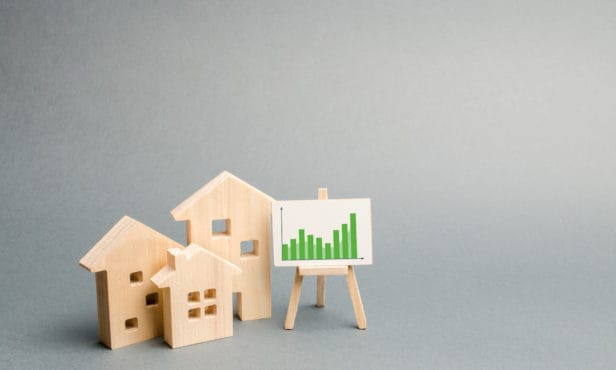House prices in Q3 saw the strongest quarterly increase since before the financial crisis according to the latest figures from Halifax.
The Halifax House Price Index showed that prices rose by 3.3% on a quarterly basis and by 5.5% on an annual basis.
These figures are the sharpest rate of inflation on this measure since the final quarter of 2016.

Yorkshire sees largest increase in property asking prices
Commenting on the latest figures, Paul Smith, economics director at IHS Markit, said: “The third quarter of 2020 saw a resurgent housing market following the COVID-19 induced lockdown earlier in the year and broadly defied all expectations to register its best quarterly performance in terms of seasonally adjusted price gains since before the financial crisis.
“The market was characterised by strong demand driven by a desire for more space – either as a reaction of the lockdown or the structural economic effects of increasing home working – and supercharged by a stamp duty cut that has incentivised vendors and buyers alike to ensure deals are closed before next Spring.
“However, the headwinds facing the market of greater affordability constraints, increased mortgage rates, and rising unemployment all suggest that current activity and rapidly rising prices are unlikely to be sustained.”
According to the latest data, the price of a typical UK property now stands at around £246,000 having risen by around £8,000 since the second quarter of 2020.
Price inflation has picked up across all buyer and property types, although notably existing property inflation (+5.8%) outstripped that of new houses (+4.1%).
Homeowners recorded a stronger rate of inflation at 5.5% than first-time buyers, which was recorded at 5.0%.
Price gains were recorded across the UK during the third quarter of the year, with Northern Ireland (+4.1%) and Scotland (+5.5%) recording the strongest quarterly gains.
On the annual measure, alongside Northern Ireland, the Midlands and the northern English regions of the North West and Yorkshire and Humberside were the best performing.
Inflation rates were all above 6% and higher than the national average.
Despite quarterly improvements across the whole of the UK, the weakest annual rates of inflation were primarily centred on the South of England such as Eastern England and the South East.
Scotland saw the weakest rate of annual inflation and was the only area of the UK to record an annual price rise below 4.0%.
The recent uplift in house prices has led to a tightening of affordability constraints, with the house price-to-earnings ratio for the UK reaching a record high level of 6.50 by the end of the third quarter.
This surpasses the previous records of 6.40 set prior to the financial crisis in mid-2007, although a crucial difference between 2007 and 2020 is that the cost of financing remains notably lower today.
By region it is Greater London, with a ratio of close to 9, and the immediate regions surrounding the capital (ratios all above 7) where affordability challenges remain most acute.
With house price-to-earnings ratios below 5, the North East, Northern Ireland and Scotland remain the most affordable places to purchase.

